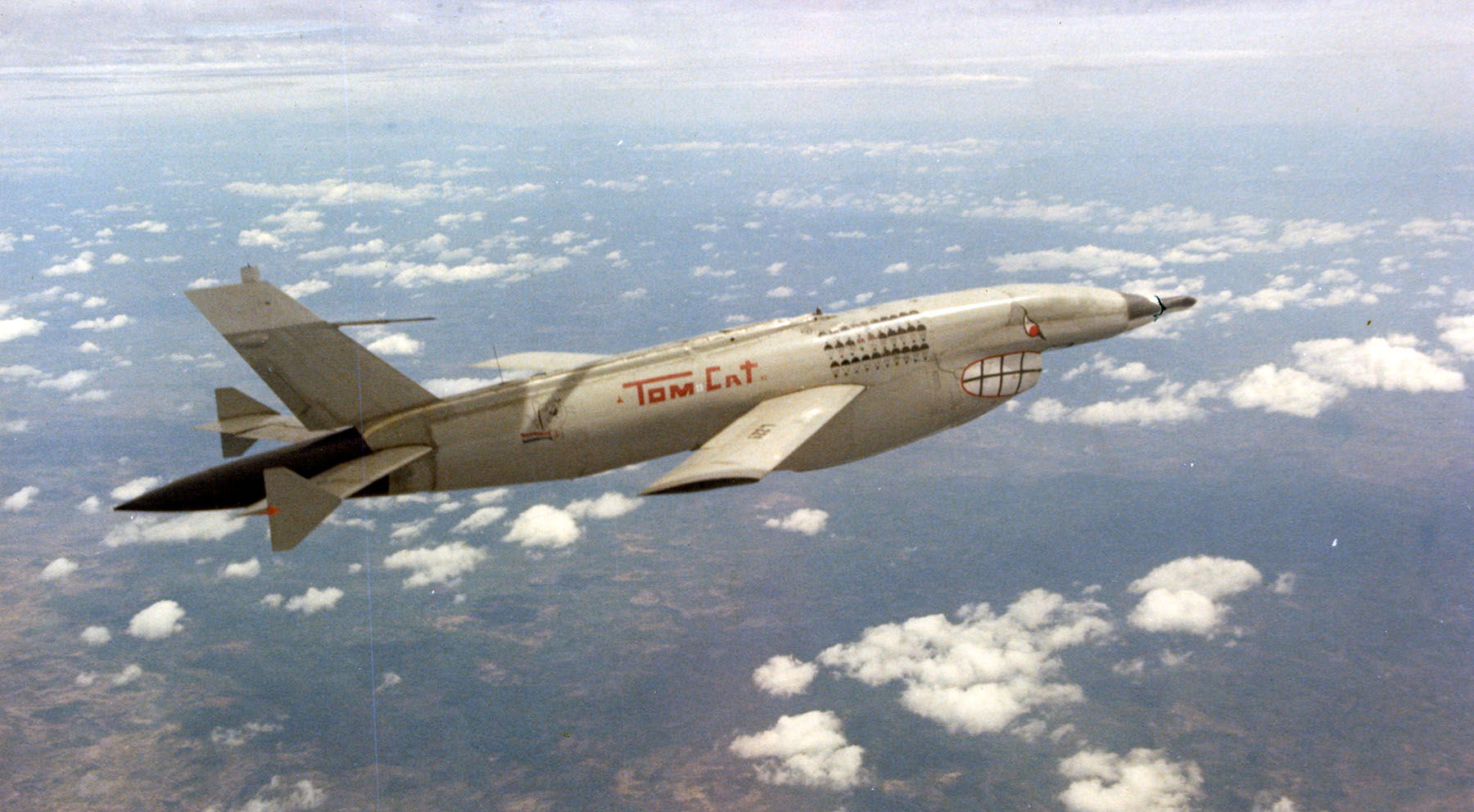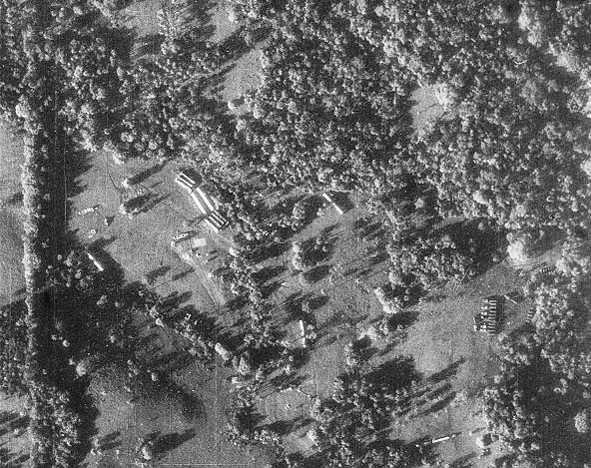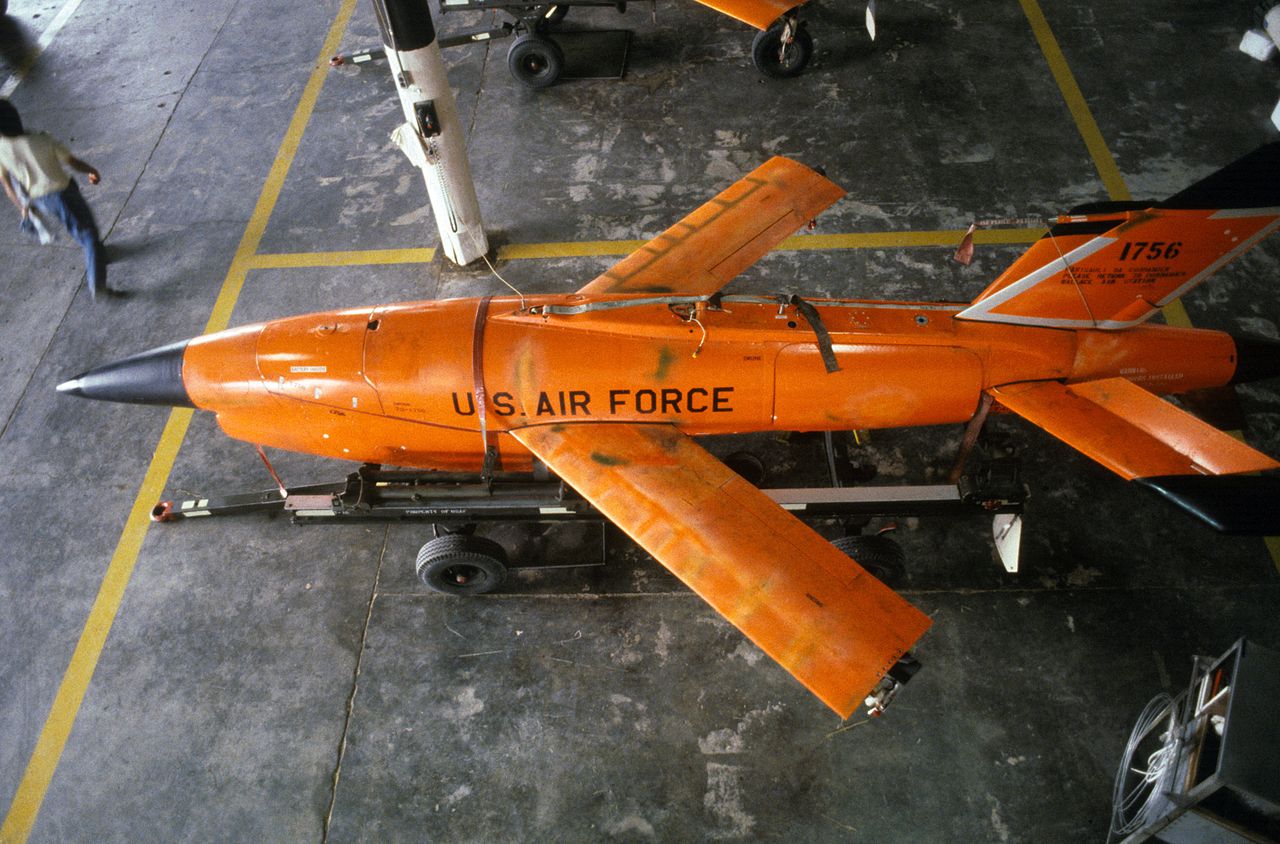The History Unmanned Aerial Vehicles, Part 3: The Cold War
By on Dec 12th 2016
For the rest of The History of Unmanned Aerial Vehicles series, you can read Part 1: WWI here and Part 2: Interwar Years & WWII here.
Post-WWII: Evolution of Target Drones and Reconnaissance
The Cold War
Immediately after World War II ended, the Cold War began. The Soviet Union and the United States were two global superpowers: as the USSR consolidated its control over the states of the Eastern Bloc, the US strategized to
suppress the spread of communism and challenge Soviet power.
During this time,
manned reconnaissance missions were conducted by the U.S. Air Force and Navy against the Soviet Union, Cuba, China, and North Korea. However, the 1960 U-2 incident (in which CIA pilot Francis Gary Powers was captured after his spy plane was shot down in Soviet airspace) led many within the Department of Defense to start thinking about unmanned reconnaissance of the USSR.
Korean War
U.S. Forces in the Pacific were unprepared when North Korea attacked the Republic of Korea on June 25, 1950.
The USS
Boxer (CV-21), of the Navy's Essex-class aircraft carriers, was ordered to ferry aircraft from California to the Korean Peninsula. She left Alameda, California on July 14, 1950 and arrived at Yokosuka, Japan, on July 23, 1950. This trip, totaling 8 days and 7 hours, was a record-breaking cross of the Pacific.
On August 5, 1952, a fire broke out on the hangar deck while engaged in combat operations in the Sea of Japan. An aircraft fuel tank caught fire, causing a number of causalities and destroying 18 aircraft.
Two weeks later, after undergoing emergency repairs, she returned to the Korean Theater and tested a new weapons system with 6 radio-guided Grumman F6F Hellcat drones.
Under the radio control of Douglas AD-4N Skyraiders from Composite Squadron 35 (VC-35), the Hellcats were used in 6 missions between August 28 and September 1952 against power plants, rail tunnels, and bridges in North Korea. The operational success was less than 50%, so the program was dropped. However, the Navy continued to use Hellcats as targets in China Lake, California into the 1960s.
>Firebee & Lightning Bug
In the early 50s, Ryan Aeronautical Company developed and constructed 32 jet-propelled, subsonic UAVs- -Firebees.- The Firebee, designed in 1951, has dominated UAV history and still lives to this day.
Ryan also modified some of these training targets into reconnaissance UAVs-designated 147A -Firefly,- and later renamed the -Lightning Bug.-
By the early 60s, they had developed more than 20 versions of the Lightning Bug unmanned subsonic target drone.

USAF Ryan AQM-34L Firebee drone “Tom Cat” of the 556th Reconnaissance Squadron. 1969. nationalmuseum.af.mil
>DASH
The Navy's DASH (QH-50) was the first operational unmanned helicopter designed for combat. The first QH-50 made its maiden flight in 1960 and nearly 800 were built. These unmanned helicopters were flown remotely from a destroyer's deck and carried either Mk-44 homing torpedoes or mark 17 nuclear depth charges. These aircraft could drop sonobuoys and flares, perform rescues, transport cargo, illuminate targets, deploy smoke screens, perform surveillance, and target spot for naval fire support.
The DASH program remained active until 1970.
Bikini Program
Beginning in 1959, the U.S. Marine Corps started a research and development program to study methods of providing organic, real-time reconnaissance for a battalion commander. The design was for a 2-man drone team with a jeep-mounted launcher and an airborne drone with a 70-mm camera.
However, the Marine Corps concluded that available technology was inadequate and the system was never fielded. The program still led to the development and employment ideas for drones 3 decades later.
Cuban Missile Crisis
On October 27, 1962, President John F. Kennedy demanded that the Soviet Union remove its nuclear warheads from Cuba. On that same day, Soviet SA-2 missiles shot down a U-2, killing its pilot. At this peak of the Cuban Missile Crisis, the U.S. was in need of photographic evidence as to whether or not the Russians had removed their missiles. Only two U-2s were available and only 2 of the Ryan Lightning Bugs had been built (and operation testing was incomplete); RF-8A Crusader aircraft were used to image Cuba.

U-2 recon photo showing evidence of missile assembly in Cuba. 1961. By CIA
The Cuban Missile Crisis highlighted the U.S. military's need for concerted UAV development efforts.
By August 1964, UAVs were finally accepted for wartime service.
In 1964, the Strategic Air Command's 100th Strategic Reconnaissance Wing launched Teledyne-Ryan AQM-34 drones along the coast of China; these UAVs penetrated Chinese airspace and photographed troop movement and military facilities. The images were later recovered and in 1965 the Chinese held a news conference where they showed a downed, pilotless US reconnaissance plane. This was the first time the American public observed a UAV performing missions too dangerous or too politically sensitive to be undertaken by manned aircraft.
Vietnam War
Vietnam was the first-time drones were used extensively during war.
Between 1964 and 1975, 3435 operational reconnaissance missions were flown.
One-third of UAV missions were performed by variations of the Lightning Bug (the workhorse of Vietnam-era UAVs). Between 1967 and 1971, 138 missions were launched from DC-130 aircraft; many were recovered via MARS (midair retrieval system)-a specially-equipped H-53 helicopter that caught the drone while in its parachute descent.
>Operation Chicken
During the course of Operation Chicken, the Lightning Bug was introduced to the same tactics used by manned aircraft to escape MiG aircraft intercepts, air-to-air intercepts, and surface-to-air missile intercepts.
Operation Chicken introduced us to the age of artificial intelligence.
These drones were often used as unmanned intelligence platforms-the IMINT (imagery intelligence) collected was used for strike planning and battle damage assessment. As the war went on, Lightning Bugs were modified with larger engines and higher payload capabilities. Because of these mods, they could now also perform signal intelligence.
UAVS also participated in psychological warfare operations via leaflet drops.
>Compass Arrow
In 1965, the Air Force called for long-range recon-UAVs. Ryan Aeronautical developed the Compass Arrow (model 154) which could fly at 78,000 ft with minimal heat and radar signature. This aircraft became the first drone to use stealth technologies.
However, unlike the Lightning Bug, this program failed to move on due to a number of political, financial, and technical problems.
The Compass Arrow was a failure and might have been partly responsible for the lack of UAV acceptance during this time.
>UCAV
The continued success of the Lightning Bug led to the development of modern Unmanned Combat Aerial Vehicles (UCAV).
The successful capabilities of UAVs for reconnaissance suggested that, at least in principle, they could be used for active comb at missions, too. In the 1970s, the Air Force began experimenting with the concept.
Throughout the 1970s, Teledyne-Ryan continued to rapidly improve and further develop their Firebees. Project HAVE LEMON utilized a number of Firebees (designated BGM-34A), equipped with a weapons pylon under each wing, to perform remote-control strikes on simulated air-defense sites.
This TRA UCAV could fire a powered, guided air-to-surface missile against a simulated target. The Israelis used the BGM-34 against Egyptian Missile sites and armored vehicles during the October 1971 Yom Kippur War and again in 1982 against Syrian missile emplacements.
Americans didn't use BGM-34A aircraft during Vietnam, though, because it could not perform better than manned technology.

A U.S. Air Force Ryan BQM-34A Firebee drone. SSgt. Daniel C. Perez, USAF.
After the Vietnam conflict, interest in UAVs once again diminished and further investments and research into recon-UAVS were put on hold. UAVs had difficulty competing with high-speed missile systems, long-range bombers, and cruise missiles.
Post-Vietnam, UAV development essentially ceased for almost a decade. It wasn't until the Israeli Air Force's Success against the Syrian Air Force in 1982, as well as the First Persian Gulf War, where UAVs really cam into their own.
Today, advancements in UAV technology has given drones an expanded role in numerous areas of aviation, especially in combat.
Sources:
Keane, John F. and Carr, Stephen S. (2013).-A Brief History of Early Unmanned Aircraft.-
Johns Hopkins APL Technical Digest, vol. 32, 558-571. http://www.jhuapl.edu/techdigest/TD/td3203/32_03-...
https://en.wikipedia.org/wiki/History_of_unmanned_...
https://en.wikipedia.org/wiki/History_of_unmanned_...





